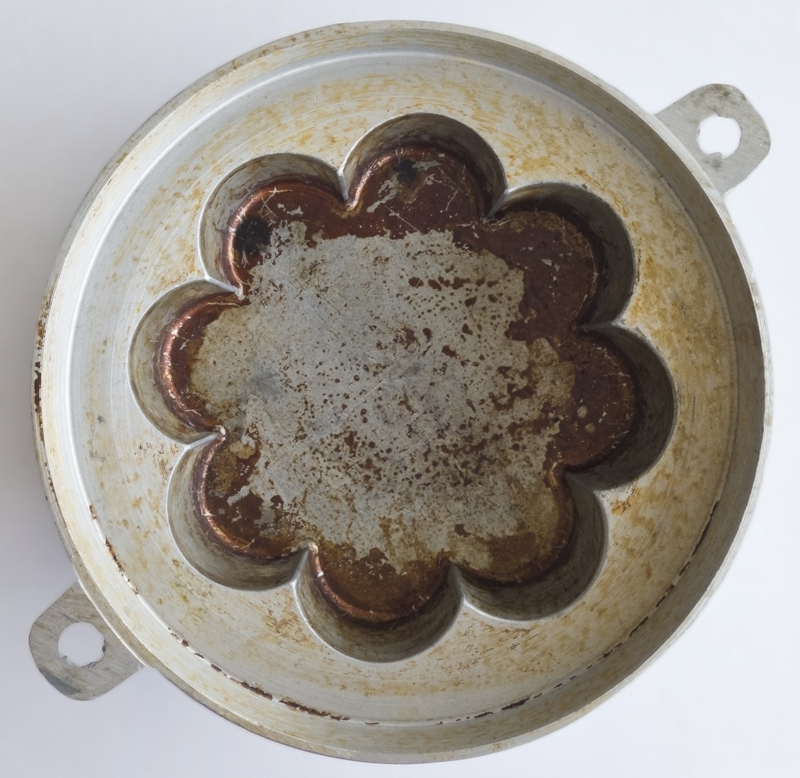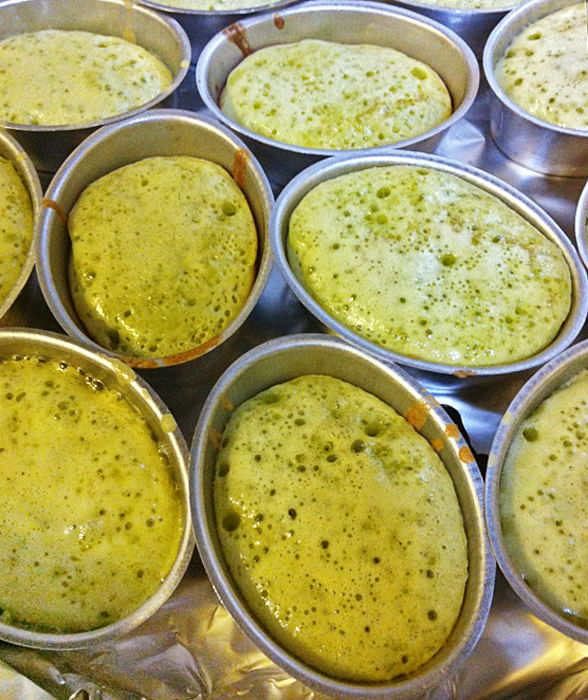Local kueh owe their timeless appeal to traditional pans. Here is a guide to those you can find at old-school kitchenware and baking supply stores. Look for the kueh themselves at food centres and shops in Geylang Serai, Katong, Tiong Bahru and Chinatown.

Metal pans: Thick-walled brass, cast iron or cast aluminium pans are for use over direct heat. Season by rubbing with oil and baking over high heat to form a non-stick patina of carbonised oil, as seen in the bingka mould (left). The patina is reinforced by repeated use. Thin-walled aluminium pans used for steamed kueh, such as kueh salat, do not need seasoning, but are greased or lined with paper or plastic before use.

Kueh bolu pan: Metal pans with hollows sculpted in flower, animal or abstract shapes, used for spongy Peranakan kueh bolu and other items such as Malay kueh cara. The brass bolu pan (left) is traditionally set over hot coal and its lipped cover also spread with hot coal to bake the kueh with sandwiched heat.
Bingka pan: Thick-walled with scalloped edges, this is used for many Malay and Indonesian kueh cooked slowly over moderate heat. These include sticky kueh bakar manis, often pandan-flavoured and topped with sesame seeds; rich and eggy kueh bingka ambon, with its trademark honeycomb texture; and potato-based kueh bingka kentang.


Kueh belandah mould: Scissor-like handles come with two patterned aluminium discs (left). A batter of eggs, coconut milk and rice and/or wheat flour is clamped between the discs and grilled on both sides over charcoal. The kueh is peeled off and rolled or folded while hot. It cools into a crisp wafer.

Kueh pukis pan: Its semi-circular hollows, which may have rounded corners (left) or sharply chiselled internal edges, turn out half-moon-shaped kueh. Kueh pukis are made from a yeasted pancake batter, covered as it cooks, yielding brown crusts and soft centres. Similar pans are used to make gandos, a savoury rice flour and grated coconut kueh.

Round-bottomed pancake pans (left): These have smooth hemispherical hollows, used for Asian snacks such as Indian unniyappam, Indonesian kue carabikang, Japanese takoyaki and Thai kanom krok. They may be distantly related via colonial history to European items such as Dutch poffertjes and Danish aebleskivers, made in virtually identical pans.
Round pancake pans: These come in various sizes, with single or multiple hollows, and are used for Indonesian murtabak, Chinese min jiang kueh and Malaysian apom balik. Pans with shallow, rounded hollows are used to make thin kueh such as Peranakan apom berkuah and Indonesian kue serabi. Pans with sharp-edged hollows are used to make wheel-shaped Japanese and Taiwanese pancakes.

Small cake pans: Individual small kueh moulds come in various materials, including porcelain - the teacups used to steam kueh kosui; thin aluminium - the oval kueh ambon cups shown (left); perforated aluminium, usually lined with paper, for steamed kueh apam kukus, huat kueh; plastic, common for coconut-topped kueh puteri ayu; or leaves - banana, pandan or jackfruit - folded and secured with wooden picks.

Baskets: Some Chinese kueh, such as large huat kueh and egg-based kueh neng koh, are steamed in bamboo baskets (left) lined with paper or plastic. The open lattice allows hot steam to circulate around the kueh, promoting its rise and final fluffy texture.
Text and photos: Chris Tan
